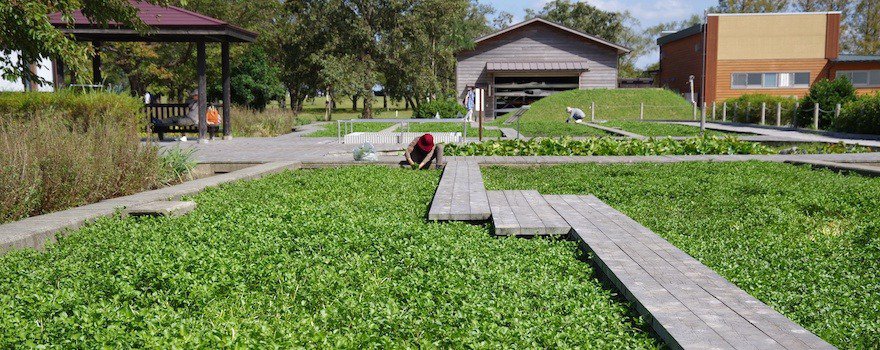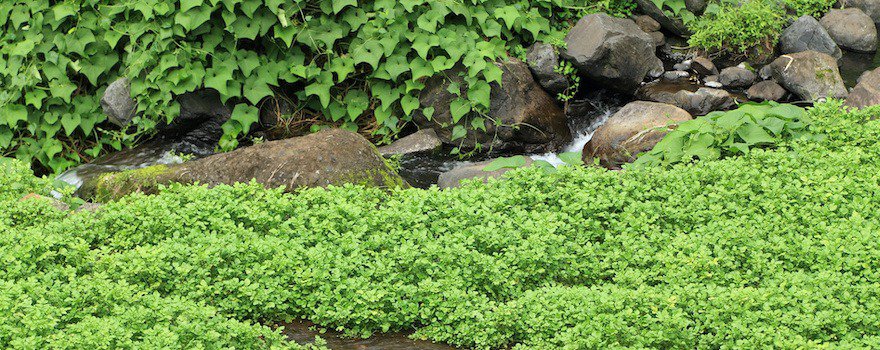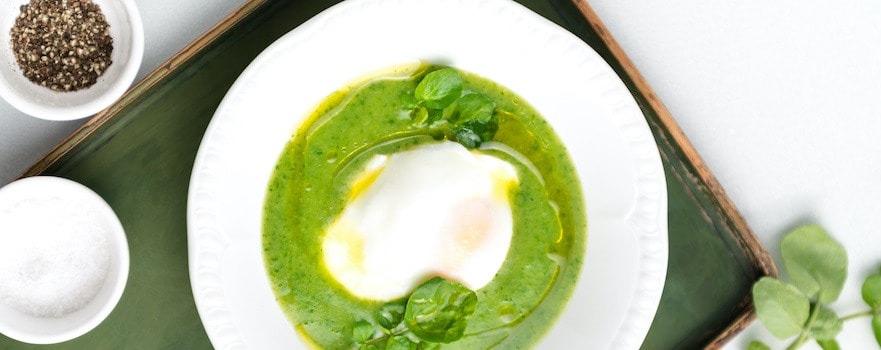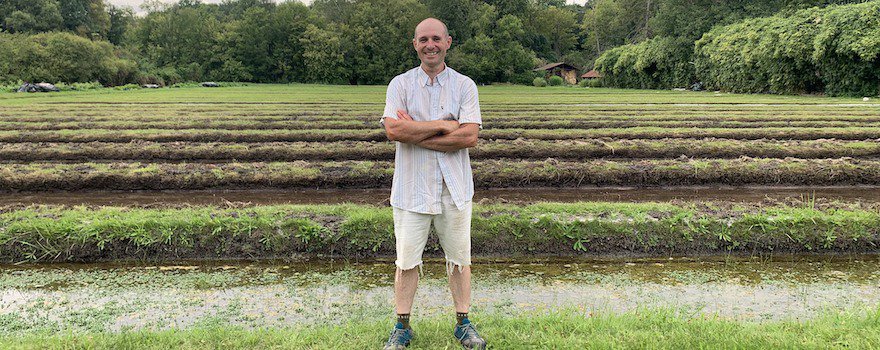BENEFITS OF WATERCRESS
✓ Antioxidant
✓ Protects the eyes
✓ Strengthens bones
✓ Helps regulate blood sugar
✓ Potentially anti-cancer
What is watercress?
Watercress (Nasturtium officinale), also called « spring watercress », belongs to the Brassicaceae family like cabbage, turnip or maca. It is a semi-aquatic plant that develops in floodable soils, ponds, streams or ditches. This variety of watercress should not be confused with garden cress (Barbarea verna) or garden cress (Lepidium sativum) which grow in open ground.
It is naturally found in Europe, Asia and North Africa, up to 2,000 m in altitude. It grows thanks to small roots at the bottom of the water that draw nutrients from deep below. Its stems are creeping and can reach up to 2 m in length.

Watercress produces round, shiny leaves of a deep green, sometimes tinged with purple, which are harvested in winter and eaten in cooking. After flowering (from April to September), it forms siliques, capsules each containing small reddish-brown seeds.
Watercress has been consumed since Antiquity for its taste as well as for its nutritional value and medicinal properties.
According to this review, it is an integral part of the traditional medicine of Iran, Azerbaijan, Morocco and Mauritius. Both the leaves and the seeds are used. In the 19th century, it was sold by street vendors in the streets of Paris for its fortifying properties. In France, it is now mostly harvested in Essonne and Aquitaine.
Today, watercress is recognized for its antioxidant action and for benefits to eye and bone health. It also shows anti-cancer effects and helps regulate blood sugar in people with diabetes.
Nutritional composition
- 9 acides aminés essentiels
- Vitamines : provitamine A (bêta-carotène), B (B1, B2, B3, B5, B6, B9), C, E, K
- Minéraux et oligo-éléments : fer, calcium, potassium, zinc, phosphore, cuivre, soufre, sodium, magnésium…
- Acides gras : oméga-3
- Antioxydants : caroténoïdes (lutéine, zéaxanthine), flavonoïdes (kaempferol, quercétine)
- Glucosinolates
- Isothiocyanates : sulforaphane, isothiocyanate de phénéthyle
- Protéines
- Glucides
- Fibres

Benefits of watercress
🥝 Antioxidant
Watercress exerts a powerful antioxidant effect, thereby combating free radicals, their accumulation in the body, and the damage they cause. This property is due to the carotenoids and flavonoids it contains.
Like most dark green vegetables (kale, spinach, Swiss chard…), watercress contains lutein and zeaxanthin. These pigments, which give it its color, also have antioxidant effects. They help protect the body and prevent certain diseases related to free radical attacks : cardiovascular and neurodegenerative diseases, diabetes… The action of these pigments is complemented by that of beta-carotene, a precursor of vitamin A that limits cellular aging.
Like the nettle and the cassava, watercress also contains two flavonoids : kaempferol and quercetin. These notably reduce the level of malondialdehyde, a marker of lipid oxidation and a sign of oxidative stress.
Finally, with 60 mg per 100 g, watercress is an excellent source of vitamin C, which also helps combat the formation of free radicals.
This study from Tehran University (Iran), conducted on rats, shows the antioxidant properties and free radical scavenging activity of watercress.
👁 Protects the eyes
Lutein and zeaxanthin present in watercress also support eye health. Together, they protect the eyes and retinal cells from free radical damage. Lutein and zeaxanthin are so-called macular pigments : they accumulate in the retina, particularly in the macula region. Along with beta-carotene, they play a protective role against certain diseases, including age-related macular degeneration (AMD), cataracts, and retinitis pigmentosa.
Furthermore, watercress contains important vitamins, minerals and trace elements for vision, including copper, zinc and vitamin E.
This study from the University of Sydney (Australia), conducted on people at high risk of macular degeneration, shows the importance of lutein and zeaxanthin for the eyes.
🦴 Strengthens bones
With 160 mg per 100 g, watercress is among the vegetables most rich in calcium, just after spinach. Calcium is an essential mineral for the body, involved notably in the structure and strength of bones and teeth.
Watercress also contains a large amount of vitamin K (250 µg). Thus, a single cup of watercress provides more than 100% of the recommended daily intake. The vitamin K strengthens bones, helps with calcium binding, improves bone density, reduces the risk of fractures and helps fight osteoporosis. It is a vitamin particularly important for children’s growth and development.
The vitamin C it contains also prevents bone loss while the magnesium (20 mg per 100 g) strengthens the entire skeleton for stronger bones.
This study from Chung-Ang University (South Korea), conducted on human cells, shows how watercress contributes to bone formation.
🍭 Helps regulate blood sugar
Watercress shows beneficial effects on blood sugar control and increased insulin sensitivity. It notably contains alpha-lipoic acid (ALA), a fatty acid from the omega-3 family.
Alpha-lipoic acid is known for its ability to increase glucose uptake. It also contributes to its conversion into energy. Finally, it activates AMP-kinase, an enzyme that regulates fat burning, the metabolism of glucose and lipids. This activation improves blood glucose and lipid profiles in cases of type 2 diabetes.
Furthermore, watercress has the advantage of being low in carbohydrates (2 g per 100 g) and having a low glycemic index (GI 15).
This study from the Iran University of Medical Sciences, conducted on diabetic rats, shows the hypoglycemic and hypolipidemic effects of the hydro-alcoholic watercress extract.
🔬 Potentially anti-cancer
Some researchers have highlighted the anti-cancer potential of watercress. Like the moringa, it contains isothiocyanates, organosulfur compounds. Among them are sulforaphane and phenethyl isothiocyanate (PEITC).
Isothiocyanates may help limit the development of cancer by inhibiting the action of carcinogenic molecules. They also reduce the activity of the HIF protein (hypoxia-inducible factor), which promotes the proliferation of cancer cells. Finally, they limit DNA damage and reduce the risk of cancer.
To date, watercress has shown promising results for colorectal cancer, lung cancer and breast cancer.
This study from Ulster University (United Kingdom), conducted on healthy adults, shows how watercress reduces cancer risk by decreasing DNA damage.
Another study from the same university, performed on cancer cells, shows the protective effect of watercress at all stages of the carcinogenic process (initiation, proliferation, progression).

How to consume watercress?
Fresh watercress leaves
The fresh watercress leaves have a rather pungent flavor, peppery and robust. They are eaten in salads, are used to prepare soups, juices, green smoothies… If you decide to eat them raw, choose cultivated watercress rather than wild, as it can harbor a parasitic worm that transmits fascioliasis.
You can also cook the leaves like spinach or chop them to use them in the same way as parsley (in omelettes, quiches, vegetable dishes…).

Dried watercress leaves
You can find dried watercress leaves sold loose or in sachets to drink as an herbal tea. This yields a diuretic infusion that promotes bile production and supports proper liver function.
To prepare a watercress tea from spring watercress, use 1 tablespoon of leaves for 25 cl of water. Boil for 2 minutes and let steep, covered, for about 10 minutes.
Watercress powder
Spring watercress powder is obtained from dried leaves that are then ground. It is a minimally processed form and retains the nutrients present in fresh watercress.
The powder is easily added to juices, smoothies, and various culinary preparations savory or sweet: salads, fish, soups…
Watercress seeds
From a nutritional standpoint, watercress seeds are just as valuable as the leaves. But they do not have the same properties: they are antidiarrheal, tonic, and aphrodisiac.
You can grind them like pepper, use them in your marinades, or eat them as is. Note that these seeds have a rather bitter taste.

Watercress mother tincture
The mother tincture of spring watercress is obtained by hydro-alcoholic maceration of fresh leaves. It’s a concentrated preparation of active compounds but has the drawback of containing a high alcohol content. It is therefore not suitable for children under 12, pregnant women, or people with certain medical conditions.
Watercress and medicinal plants
To fight free radicals, watercress can be consumed in combination with spirulina.
In case of type 2 diabetes, you can supplement its consumption with fenugreek, seeds of carob or of basil.
Sustainable consumption: favor organic, local watercress

✓ Today, 40% of French production comes from the Essonne department, which sells 7 million bunches per year. It is therefore quite easy to buy watercress grown in France, even directly from the producer if you find a watercress farm near you. Seasonal leaves are available from October to May. If the watercress does not come from France, check its exact origin.
Read also The watercress farm in Mikaël’s transition to organic
✓ In addition to local options, also favor watercress from organic farming because it tends to absorb pollutants (insecticides, herbicides, pesticides, heavy metals…).
Dosage
The recommended dosage is 200 g of leaves of fresh watercress per week.
A spring watercress cleanse helps detoxify the body.
- Feuilles fraîches : 200 g par semaine
- Tisane de feuilles séchées : 2 à 3 tasses par jour
- Cresson en poudre : 1 à 2 g par jour
- Graines de cresson : 1 cuillère à café par jour
- En teinture-mère : 15 gouttes par jour, matin et soir
Contraindications and side effects
The consumption of watercress presents certain contraindications :
- Par mesure de précaution, il est déconseillé aux femmes enceintes et allaitantes et aux jeunes enfants
- En raison de son action diurétique, les personnes souffrant de troubles des voies urinaires doivent éviter d’en consommer
- Sa consommation est déconseillée aux personnes souffrant d’ulcères de l’estomac ou du duodénum ou de maladies rénales
- Il peut interférer avec la production d’hormones thyroïdiennes donc on le déconseille aux personnes présentant des troubles de la thyroïde
Excessive consumption of watercress can cause irritation of the stomach and urinary tract. If you experience side effects, stop consuming it and consult a doctor.
History, cultivation and market of watercress
During Antiquity, watercress was considered “the remedy of remedies.” In France, it has been produced since the 17th century. Watercress growers cultivate it in watercress beds, generally irrigated with spring water. The watercress beds of the commune of Méréville, in Essonne, are listed in the national inventory of intangible cultural heritage. They could soon become part of UNESCO’s World Heritage.
But over the past 10 years, production has continued to decline. Difficult working conditions no longer attract the younger generation and climate change heavily impacts yields. In 2012, watercress growers in Essonne recorded losses of between 70% and 80%. Consuming watercress helps preserve this agricultural and culinary heritage.
Report produced by Julia Perez and Charlotte Jean
Sources and scientific studies
Marta Klimek-Szczykutowicz, Agnieszka Szopa, Halina Ekiert, 2018. Chemical composition, traditional and professional use in medicine, application in environmental protection, position in food and cosmetics industries, and biotechnological studies of Nasturtium officinale (watercress) – a review.
Seifollah Bahramikia, Razieh Yazdanparast, 2010. Antioxidant efficacy of Nasturtium officinale extracts using various in vitro assay systems.
Bronwyn Eisenhauer, Sharon Natoli, Gerald Liew, Victoria M Flood, 2017. Lutein and Zeaxanthin-Food Sources, Bioavailability and Dietary Variety in Age-Related Macular Degeneration Protection.
Hanbit Hyun, Heajin Park, Jaehoon Jeong, Jihye Kim, Haesung Kim, Hyun Il Oh, Hye Seong Hwang, Ha Hyung Kim, 2014. Effects of Watercress Containing Rutin and Rutin Alone on the Proliferation and Osteogenic Differentiation of Human Osteoblast-like MG-63 Cells.
Chris R Gill, Sumanto Haldar, Lindsay A Boyd, Richard Bennett, Joy Whiteford, Michelle Butler, Jenny R Pearson, Ian Bradbury, Ian R Rowland, 2007. Watercress supplementation in diet reduces lymphocyte DNA damage and alters blood antioxidant status in healthy adults.
Lindsay A Boyd, Mark J McCann, Yumi Hashim, Richard N Bennett, Chris I R Gill, Ian R Rowland, 2006. Assessment of the anti-genotoxic, anti-proliferative, and anti-metastatic potential of crude watercress extract in human colon cancer cells.



